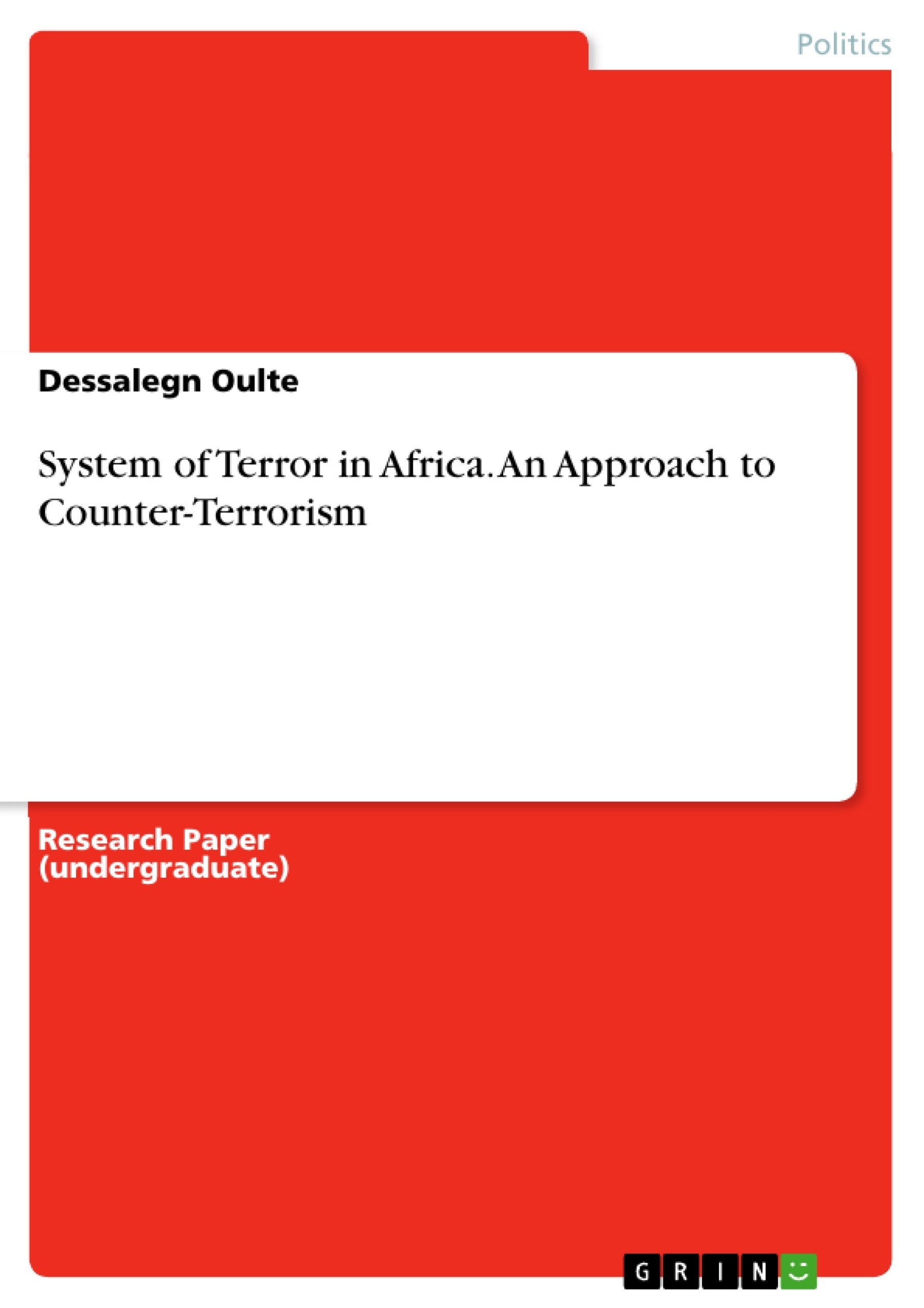This paper discusses systematic elements of terrorist groups that determine their continued existence and operational effectiveness in Africa. According to system theory, open systems are real-world systems whose boundaries allow exchanges of energy, material, information, resources etc. with the larger external environment or system in which they exist. Accordingly, terrorism phenomenon is an open system in which ideology, tactics, technology and many other aspects shared among terrorist groups despite their differences in many aspects. Hence, the paper will argues such common trends of terrorist phenomenon in Africa.
Inhaltsverzeichnis (Table of Contents)
- Introduction
- Africa's Terrorist Groups' Common Characteristics
- System of Terrorism In Africa
- Strategies to Counter the System Of Terrorism
- Conclusion
Zielsetzung und Themenschwerpunkte (Objectives and Key Themes)
This paper aims to analyze the systematic elements of terrorist groups in Africa, highlighting factors that contribute to their continued existence and operational effectiveness. It applies system theory to understand terrorism as an open system, exploring the shared characteristics and interconnectedness of terrorist groups operating across the continent. The paper further examines strategies to counter these systemic elements and ultimately eliminate terrorism in Africa.
- Systemic approach to understanding terrorism in Africa
- Common characteristics of terrorist groups in Africa
- The interconnected elements of the system of terrorism in Africa
- Strategies for counterterrorism in Africa
- The importance of addressing systemic vulnerabilities to effectively combat terrorism
Zusammenfassung der Kapitel (Chapter Summaries)
The introduction discusses the application of system theory in understanding terrorism, highlighting the interconnected elements and processes that contribute to the phenomenon. It emphasizes the open-system nature of terrorism and how various factors, including ideology, tactics, technology, and resources, are shared among terrorist groups. The paper argues that effectively addressing terrorism requires understanding and targeting these systemic elements.
The second chapter explores the common characteristics of terrorist groups operating in Africa. It examines factors such as porous borders, proximity to the Middle East, and political instability that contribute to the rise of terrorism in the region. This chapter provides a contextual background for understanding the complexities of terrorism in Africa.
Schlüsselwörter (Keywords)
This paper focuses on the application of system theory to counterterrorism in Africa, exploring the shared characteristics of terrorist groups, identifying the interconnected elements of the system of terrorism, and developing strategies to effectively counter these systemic vulnerabilities. Key terms include system theory, terrorism, counterterrorism, Africa, terrorist groups, common characteristics, interconnected elements, strategies, and systemic vulnerabilities.
- Quote paper
- Master of Art Dessalegn Oulte (Author), 2016, System of Terror in Africa. An Approach to Counter-Terrorism, Munich, GRIN Verlag, https://www.grin.com/document/334624



